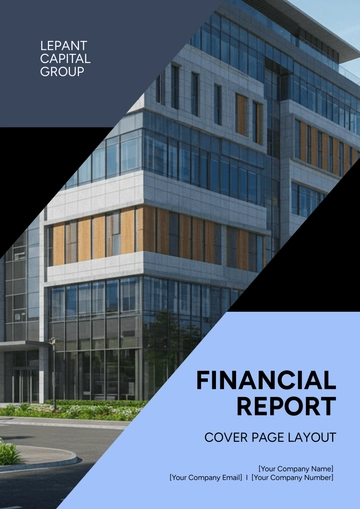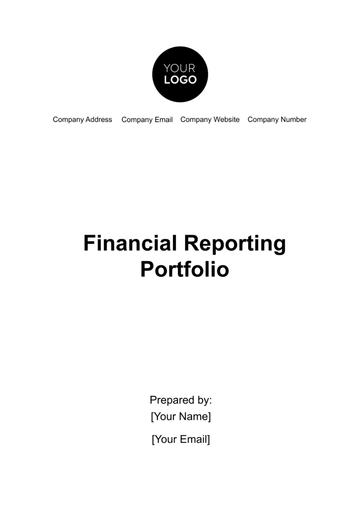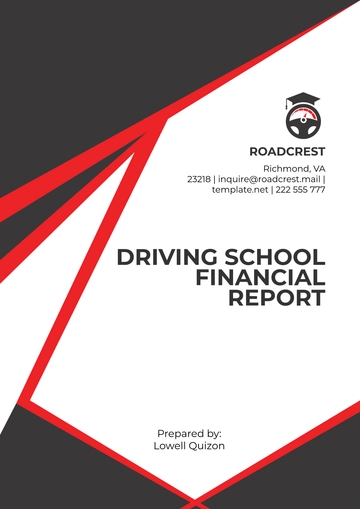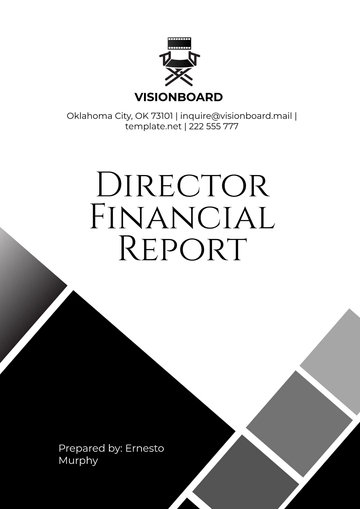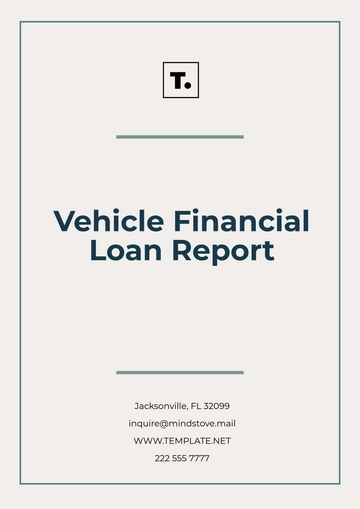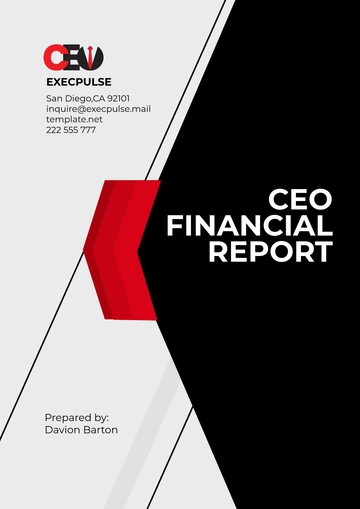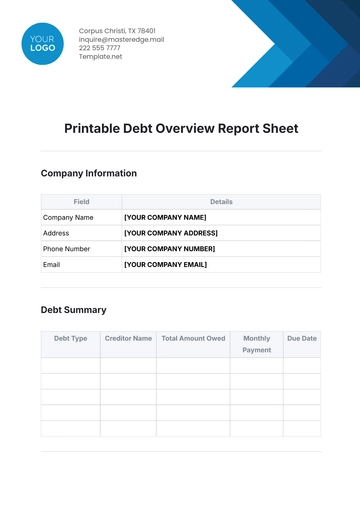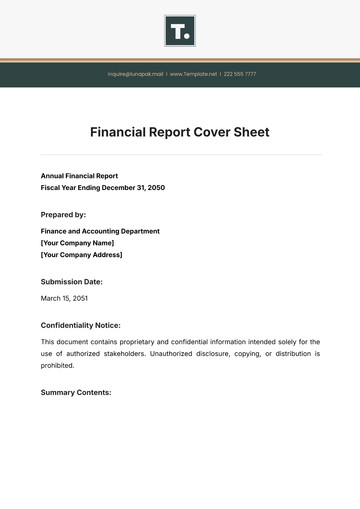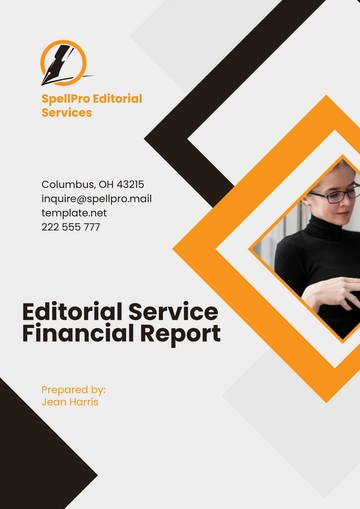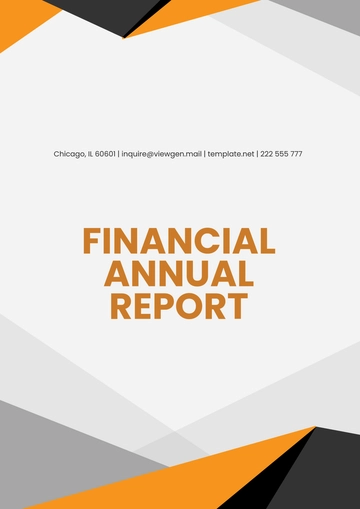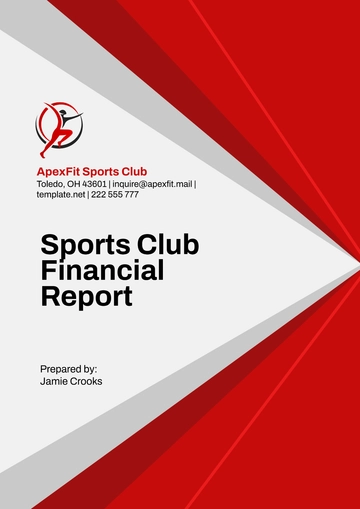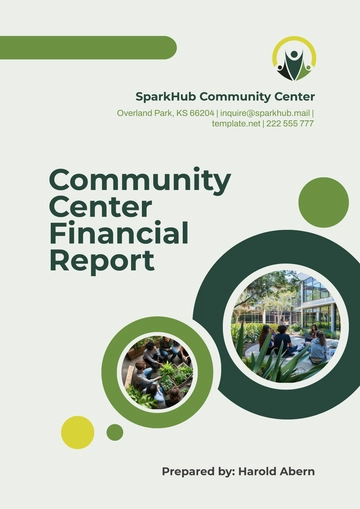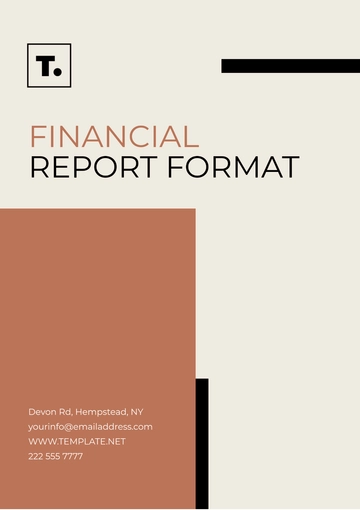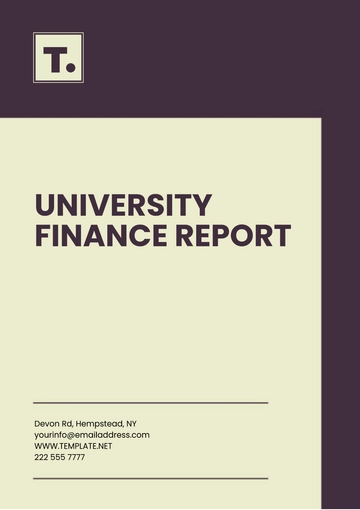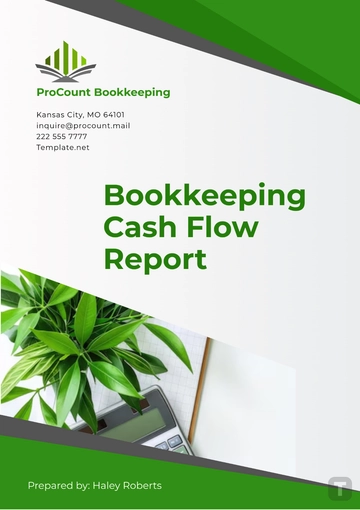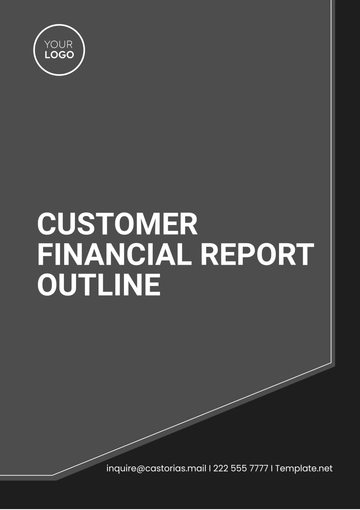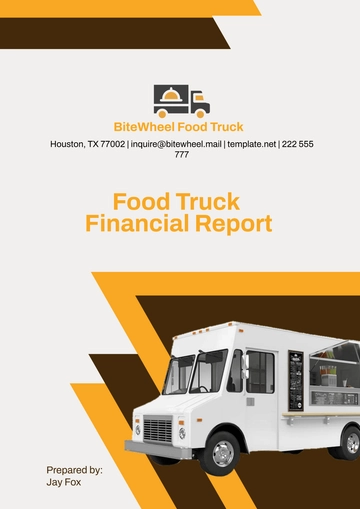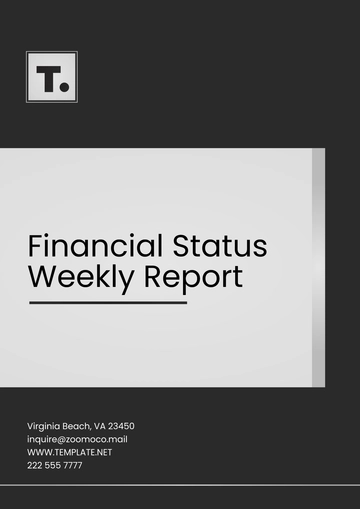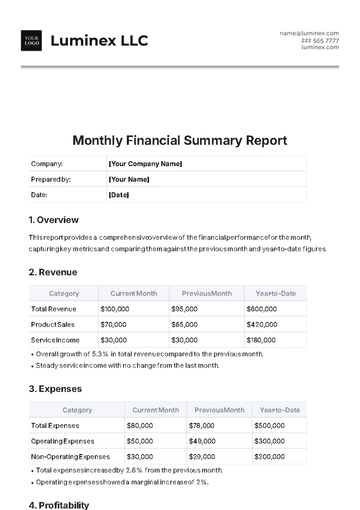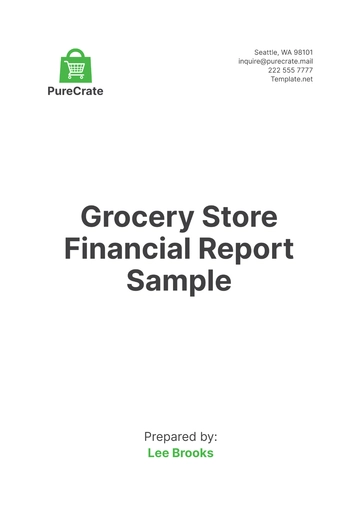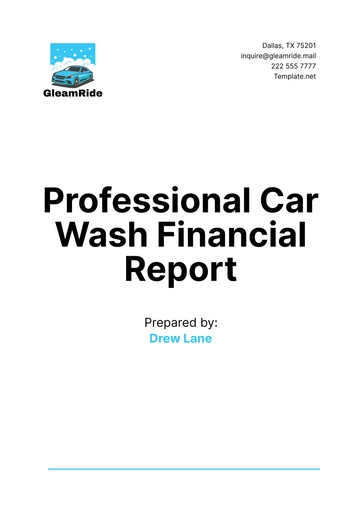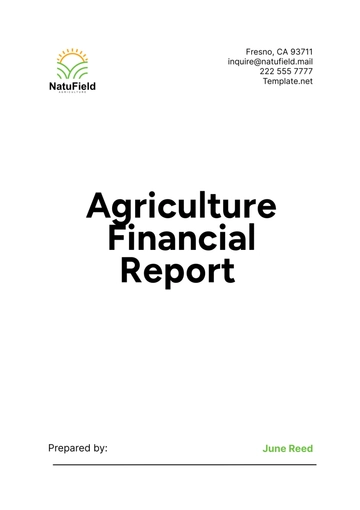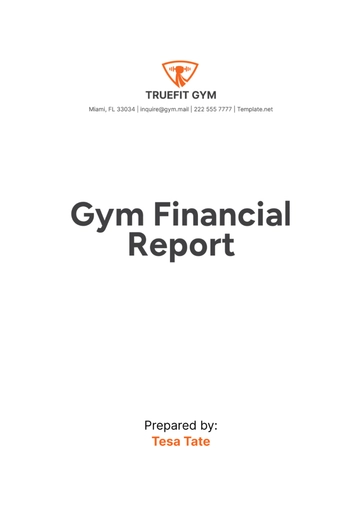Free Food Supply Financial Report
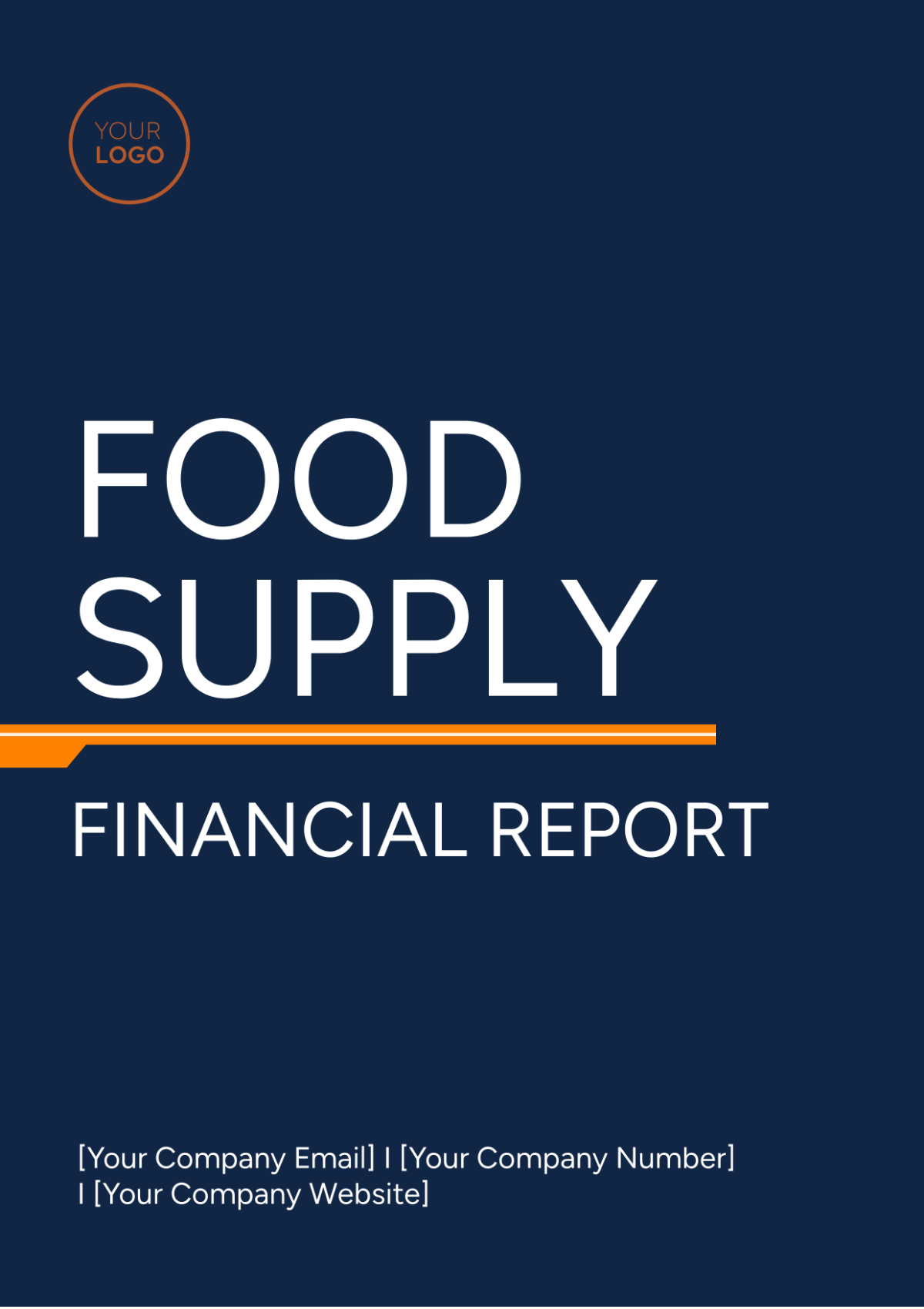
Date: January 1, 2050
Prepared by: [Your Name]
Email: [Your Email]
I. Executive Summary
The purpose of this financial report is to track and manage the expenses related to the food supply for [Your Company Name], a restaurant chain operating across various locations. This report covers the fiscal year 2050 and provides insights into our spending patterns, budget allocation, and cost-saving opportunities.
II. Financial Overview
A. Revenue
Total revenue generated from all restaurant locations for the fiscal year 2050 amounted to $50,000,000.
B. Expenses
A detailed summary of expenses related to the food supply:
Category | Amount | Percentage of Total Expenses |
|---|---|---|
Fresh Produce | $5,000,000 | 25% |
Meat and Seafood | $4,000,000 | 20% |
Dairy Products | $2,000,000 | 10% |
Beverages | $1,500,000 | 7.5% |
Pantry Staples | $1,000,000 | 5% |
Frozen Foods | $500,000 | 2.5% |
III. Budget vs Actual
Comparative analysis of budgeted expenses versus actual expenses:
Category | Budgeted Amount | Actual Amount | Variance | Variance |
|---|---|---|---|---|
Fresh Produce | $4,800,000 | $5,000,000 | $200,000 | 4.2% |
Meat and Seafood | $4,200,000 | $4,000,000 | -$200,000 | -4.8% |
Dairy Products | $2,100,000 | $2,000,000 | -$100,000 | -5% |
Beverages | $1,400,000 | $1,500,000 | $100,000 | 7.1% |
Pantry Staples | $1,200,000 | $1,000,000 | -$200,000 | -16.7% |
Frozen Foods | $600,000 | $500,000 | -$100,000 | -16.7% |
IV. Cost-Saving Opportunities
Negotiate with suppliers for bulk purchase discounts.
Optimize inventory management to reduce food waste.
Leverage seasonal produce to reduce fresh produce costs.
Implement energy-efficient practices in food storage to cut down utility expenses.
V. Future Projections
Based on current trends and market analysis, the projected food supply expenses for the next fiscal year are as follows:
Total projected expenses: $15,000,000
Expected increase in fresh produce cost by 3% due to inflation.
5% savings on meat and seafood via sustainable sourcing.
Anticipated stability in dairy products and beverage costs.
VI. Conclusion
In conclusion, managing food supply expenses efficiently is critical for maintaining profitability at [Your Company Name]. By focusing on cost-saving opportunities and anticipating future trends, we can ensure financial stability and growth for our restaurant chain.
For further inquiries, please contact [Your Name] at [Your Email].
- 100% Customizable, free editor
- Access 1 Million+ Templates, photo’s & graphics
- Download or share as a template
- Click and replace photos, graphics, text, backgrounds
- Resize, crop, AI write & more
- Access advanced editor
The Food Supply Financial Report Template is designed to help businesses in the food industry track and manage their finances. It includes sections for income, expenses, profit margins, and inventory costs. By using this template, businesses can gain insights into their financial health, identify areas for improvement, and make informed decisions to optimize their operations.
You may also like
- Sales Report
- Daily Report
- Project Report
- Business Report
- Weekly Report
- Incident Report
- Annual Report
- Report Layout
- Report Design
- Progress Report
- Marketing Report
- Company Report
- Monthly Report
- Audit Report
- Status Report
- School Report
- Reports Hr
- Management Report
- Project Status Report
- Handover Report
- Health And Safety Report
- Restaurant Report
- Construction Report
- Research Report
- Evaluation Report
- Investigation Report
- Employee Report
- Advertising Report
- Weekly Status Report
- Project Management Report
- Finance Report
- Service Report
- Technical Report
- Meeting Report
- Quarterly Report
- Inspection Report
- Medical Report
- Test Report
- Summary Report
- Inventory Report
- Valuation Report
- Operations Report
- Payroll Report
- Training Report
- Job Report
- Case Report
- Performance Report
- Board Report
- Internal Audit Report
- Student Report
- Monthly Management Report
- Small Business Report
- Accident Report
- Call Center Report
- Activity Report
- IT and Software Report
- Internship Report
- Visit Report
- Product Report
- Book Report
- Property Report
- Recruitment Report
- University Report
- Event Report
- SEO Report
- Conference Report
- Narrative Report
- Nursing Home Report
- Preschool Report
- Call Report
- Customer Report
- Employee Incident Report
- Accomplishment Report
- Social Media Report
- Work From Home Report
- Security Report
- Damage Report
- Quality Report
- Internal Report
- Nurse Report
- Real Estate Report
- Hotel Report
- Equipment Report
- Credit Report
- Field Report
- Non Profit Report
- Maintenance Report
- News Report
- Survey Report
- Executive Report
- Law Firm Report
- Advertising Agency Report
- Interior Design Report
- Travel Agency Report
- Stock Report
- Salon Report
- Bug Report
- Workplace Report
- Action Report
- Investor Report
- Cleaning Services Report
- Consulting Report
- Freelancer Report
- Site Visit Report
- Trip Report
- Classroom Observation Report
- Vehicle Report
- Final Report
- Software Report
